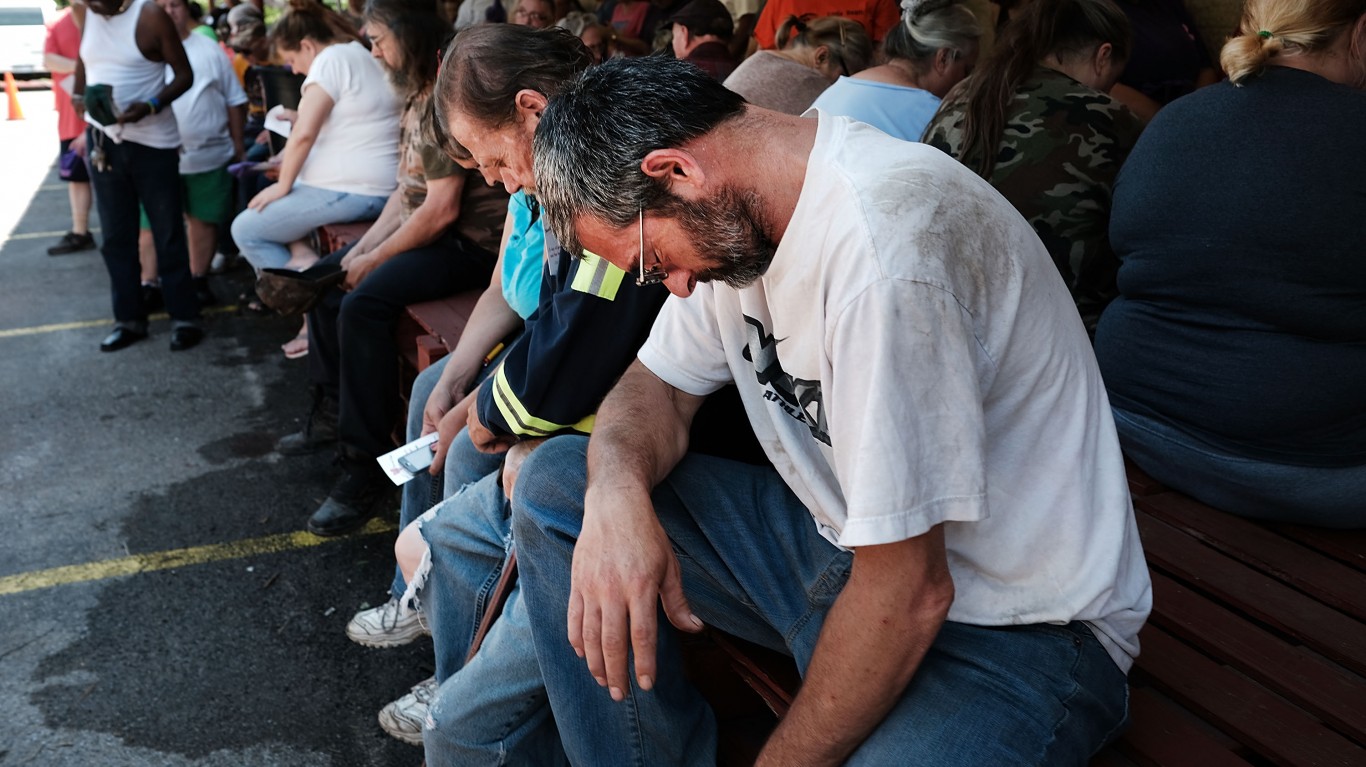
The health of a state’s economy depends on perspective. For businesses, the primary considerations may be taxes and the extent to which workforces can organize or demand benefits. For workers, the issues tend more toward wages and insurance. For economists, the measures could be unemployment and state gross domestic product (GDP). While it is hard to say which of these should be the deciding factors, there are some ways to blend them together.
To determine the states with the best economy, both in the years leading up to the pandemic and during it, 24/7 Wall St. created an index of five measures: five-year economic growth, five-year employment growth, the poverty rate, unemployment rate and share of adults with a bachelor’s degree or higher.
To make a final decision, we found that the states with economies that rank on the lower end depend on industries that were hit hard by the COVID-19 pandemic. States like Hawaii and Nevada, where tourism is an economic pillar, as well as states like Wyoming and Alaska that depend on resource extraction, rank lower on this list than they perhaps otherwise would if not for the pandemic.
GDP growth, one of the index components, is commonly used to gauge the relative economic vitality of a given geography. Population growth often fuels economic growth, and many of the states with the fastest-growing economies (indeed, many of the states with the best economies) also have rapidly growing populations.
To determine the states with the best economy, 24/7 Wall St. ranked states based on an index comprising the five measures mentioned above. The average annual GDP growth rate from the fourth quarter of 2015 to the fourth quarter of 2020 came from the Bureau of Economic Analysis and was included in the index at full weight. The average annual employment growth rate from March 2016 to March 2021 came from the Bureau of Labor Statistics (BLS) and was included in the index at full weight. The seasonally adjusted unemployment rate as of March 2021 also came from the BLS and was included in the index at full weight. The share of the population living below the poverty line and the share of adults with a bachelor’s degree or higher came from the U.S. Census Bureau’s 2019 American Community Survey (ACS) and were included in the index at full weight.
In addition to the components in the index, we considered additional state data. Real GDP and contributions to real GDP growth by industry came from the Bureau of Economic Analysis (BEA). Median household income, bachelor’s degree attainment rate and the share of workers commuting outside of the state for work came from the 2019 ACS. The affordability ratio of median home value to median household income is a 24/7 Wall St. calculation based on ACS data. Data on regional price parity, a measure of cost of living, came from the BEA and is for 2019. Population change due to natural causes and net migration from 2010 to 2020 came from the U.S. Census Bureau. All data are for the most recent period available.
The state with the best economy is Utah. Here are the details:
- Five-year annualized GDP growth through Q4 2020: +3.9% (second highest)
- Five-year annualized employment growth through March 2021: +2.0% (second highest)
- March 2021 unemployment rate: 2.9% (fourth lowest)
- Poverty rate: 8.9% (second lowest)
Despite the challenges posed by the COVID-19 pandemic, economic conditions in Utah remain relatively strong. As of March 2021, only 2.9% of the state’s labor force was out of work, nearly the smallest share of any state and less than half the 6.0% national unemployment rate.
Utah’s GDP has grown by 3.9% over the five years ending in the fourth quarter of 2020, the second-highest growth of any state. A near 6% decline in output in the state’s arts, entertainment and recreation industry (precipitated in large part by efforts to contain the spread of the coronavirus) was offset by strong growth in the state’s real estate, construction and information sectors. Economic growth is often attributable to population growth and, partially due to the state’s high birth rate, there are nearly half a million more people in Utah today than there were in 2010.
Click here to see all the states with the best and worst economies.
Take Charge of Your Retirement In Just A Few Minutes (Sponsor)
Retirement planning doesn’t have to feel overwhelming. The key is finding expert guidance—and SmartAsset’s simple quiz makes it easier than ever for you to connect with a vetted financial advisor.
Here’s how it works:
- Answer a Few Simple Questions. Tell us a bit about your goals and preferences—it only takes a few minutes!
- Get Matched with Vetted Advisors Our smart tool matches you with up to three pre-screened, vetted advisors who serve your area and are held to a fiduciary standard to act in your best interests. Click here to begin
- Choose Your Fit Review their profiles, schedule an introductory call (or meet in person), and select the advisor who feel is right for you.
Why wait? Start building the retirement you’ve always dreamed of. Click here to get started today!
Thank you for reading! Have some feedback for us?
Contact the 24/7 Wall St. editorial team.




